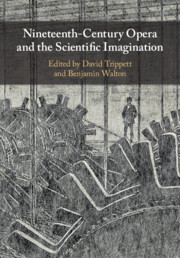Book contents
Part II - Ears
Published online by Cambridge University Press: 07 August 2019
Summary
For a long time, Hector Berlioz was thought to hold a singular, even an isolated position in music history. Among the first to offer a new perspective was Pierre Boulez, who suggested that Berlioz’s position in music history could be explained by ‘the fact that a large part of his œuvre has remained in the realm of the imaginary’. With this remark, Boulez alluded to the Grand traité d’instrumentation et d’orchestration modernes (1844/55), and more specifically to the chapter on the orchestra that closes the treatise. Speculations on the sound of an orchestra that would unite ‘all the forces that are present in Paris and create an ensemble of 816 musicians’ were, for Boulez, typical of Berlioz: ‘mixing realism and imagination without opposing one to the other, producing the double aspect of an undeniable inventive “madness” – a fairly unreal dream minutely accounted for’.
- Type
- Chapter
- Information
- Nineteenth-Century Opera and the Scientific Imagination , pp. 107 - 172Publisher: Cambridge University PressPrint publication year: 2019

